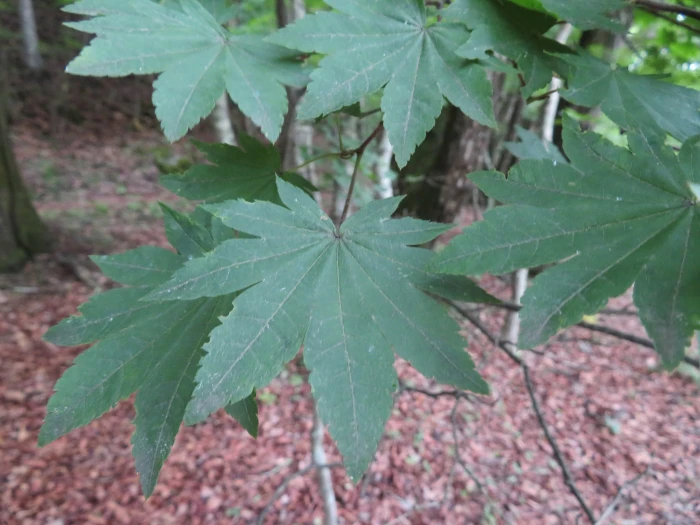Siebold’s Maple
(Acer sieboldianum)
Siebold’s Maple (Acer sieboldianum)
/
/

belvedere04
CC BY 4.0
Image By:
belvedere04
Recorded By:
Copyright:
CC BY 4.0
Copyright Notice:
Photo by: belvedere04 | License Type: CC BY 4.0 | License URL: http://creativecommons.org/licenses/by/4.0/ | Rights Holder: belvedere04 | Publisher: iNaturalist | Date Created: 2023-06-16T12:21:25-07:00 |






























Estimated Native Range
Climate Requirements for Maple Valley, Washington
| This Plant | Your Site | Plant Suitability for Your Location | ||
|---|---|---|---|---|
| • Precipitation | 21" - 135" | 52" | Aquatic | Aquatic |
| • High Temp. | 57°F - 91°F | 77°F | Your summer temperatures are normal for this plant. | Excellent |
| • Low Temp. | -16°F - 41°F | 32°F | Your winter temperatures are normal for this plant | Excellent |
This plant should grow well at your location with about N inches per year (Y minutes per month) of irrigation.
Summary
Acer sieboldianum, commonly known as Siebold’s Maple, is a deciduous tree native to the mountainous forests and forest edges of Japan, specifically in regions of Hokkaidō, Honshū, Shikoku, and Kyūshū. It typically reaches a height of 33-49 feet with a rounded to broad-rounded form. The bark is smooth and grey-brown, providing a subtle contrast to the foliage. The leaves are mid to dark green, palmately lobed, and known for their striking bright orange to red color in autumn. Siebold’s Maple produces inconspicuous pale yellow flowers in late spring, which are followed by paired samaras (winged fruit) that mature in early autumn. This species is often mistaken for Acer japonicum and Acer palmatum but can be distinguished by its smooth bark and yellow flowers.
Siebold’s Maple is valued for its ornamental features, particularly its vibrant fall foliage. It is suitable for use in urban settings, residential gardens, and as a specimen tree in parks. This maple prefers full sun to part shade, well-drained soil, and moderate water, making it relatively easy to maintain. While it is not known for serious disease or pest issues, it can be susceptible to leaf scorch in excessively dry conditions. Siebold’s Maple is not typically invasive when grown outside its native range, but gardeners should always monitor and manage their plants responsibly.CC BY-SA 4.0
Siebold’s Maple is valued for its ornamental features, particularly its vibrant fall foliage. It is suitable for use in urban settings, residential gardens, and as a specimen tree in parks. This maple prefers full sun to part shade, well-drained soil, and moderate water, making it relatively easy to maintain. While it is not known for serious disease or pest issues, it can be susceptible to leaf scorch in excessively dry conditions. Siebold’s Maple is not typically invasive when grown outside its native range, but gardeners should always monitor and manage their plants responsibly.CC BY-SA 4.0
Plant Description
- Plant Type: Tree
- Height: 15-30 feet
- Width: 15-30 feet
- Growth Rate: Slow
- Flower Color: N/A
- Flowering Season: Spring
- Leaf Retention: Deciduous
Growth Requirements
- Sun: Full Sun, Part Shade
- Water: Medium
- Drainage: Medium
Common Uses
Border Plant, Low Maintenance, Potted Plant
Natural Habitat
Mountainous forests and forest edges in Japan
Other Names
Common Names: Itaya-Meigetsu, Japanese Maple, Ko-Hauchiwa-Kaede
Scientific Names: Acer sieboldianum, Acer japonicum var. sieboldianum, Acer palmatum var. kaempferi, Acer palmatum var. kaempferi, Acer polymorphum var. kaempferi, Acer sieboldianum f. dissectum, Acer sieboldianum f. dissectum, Acer sieboldianum f. microphyllum, Acer sieboldianum f. tortuosum
GBIF Accepted Name: Acer sieboldianum